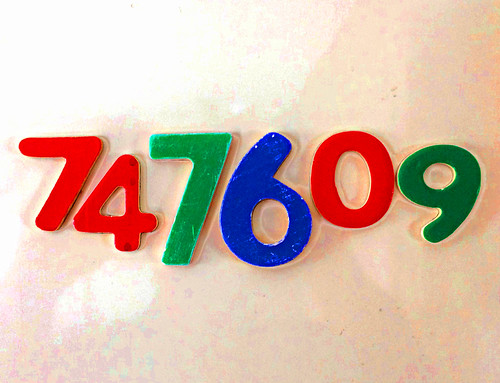First and second class provide a window of opportunity to learn addition and subtraction tables. Second class is a fresh opportunity for the children to learn these tables. In the main, I found the children have learned tables to 5 very well. These will be revised and then there will be another chance to learn to later tables to ten . It is important to master these tables by the end of second because
• In third and fourth the focus changes to multiplication and division.
• If a child knows their simple number facts they can more or less their full attention to method when being taught new maths e.g. ‘renaming’ when subtracting two digit numbers.
Ways of learning
In school we practise these tables, in a concrete way, using lollipop sticks and unifix cubes from the Number Bags on our desks. We have been singing the tables along to music. Hopefully the children have shown you how we use our hands to keep us on track while saying the table. We also use the table book.
In school we use Joyce O’Hara’s Addition and Subtraction CD from
SEE THIS LINK FOR THE JOYCE O’HARA CD FROM ASHTON PRODUCTIONS
We say ‘one and zero make one’, one and one make two’
‘one from six leaves five’. In this way we use the same language as this cd.
Children learn in different ways. Many respond to working with concrete objects; lollipop sticks, cubes, smarties. Some children really pick up on singing or chanting the table. For some keeping track of their tables on their fingers (a kinaesthetic approach) helps.
If you feel your child is not getting enough homework
Some of you may find that replacing the written maths the children used do with learning a table makes for less homework. But remember the few days or so it will be a case of adding and subtracting one and two. This will be quite easy. The tables will get harder after that.
If you do want to do extra work with your child you could rewrite some number facts from the tables as problems. We are told that children find problem solving difficult in maths. This may sound difficult, but can take as simple a form as ‘I had two pancakes on my plate. Mum made one more. How many had I then?’
Many of the children are very taken with the idea of learning how to multiply. We are in second class and as I say multiplication is on the curriculum for third.
Between now and Christmas we will be doing a ‘blitz’ on addition and take away tables. For this reason these tables are the only maths homework we are going to do in the next month. Instead we will do the exercises in the Mental Maths workbook in during class.
But time is ticking on and in second class multiplication is taught as repeated addition. In class we will be learning about number patterns and learning to count in 2s,4s,5s,etc. and using the hundred square.
I found these lively videos to help us:
!!!!!!!!!!!!!!!!!!!!!!!!!!!!!!!!!!!!!!!!!!!!!!!!!!!!!!!!!!!!!!!!!!!!!!!!!!!!!!!!!!!!!!!!!!!!!!!!!!!!!!!!!!!!!!!!!!!
VIDEOS TEACHING NUMBER PATTERNS FROM HAVEFUNTEACHING.COM
!!!!!!!!!!!!!!!!!!!!!!!!!!!!!!!!!!!!!!!!!!!!!!!!!!!!!!!!!!!!!!!!!!!!!!!!!!!!!!!!!!!!!!!!!!!!!!!!!!!!!!!!!!!!!!!!!!!
We will also use this Counting Rap to help us:
Counting Cadence
Based on the Counting Cadence song from
the Dr. Jean Feldman Kiss Your Brain CD
We’re the best, we’re number one.
Now let’s have some counting fun.
1 2 3 4 5 6 7 8 9 10 11 12
We are smart, we’re really cool.
Come on and let’s count by twos.
2 4 6 8 10 12 14 16 18 20 22 24
We are rockin’ you can see.
All together count by threes.
3 6 9 12 15 18 21 24 27 30 33 36
We’ve got the beat&we know more.
Everybody count by fours.
4 8 12 16 20 24 28 32 36 40 44 48
We can count and we’re alive.
Now let’s try and count by fives.
5 10 15 20 25 30 35 40 45 50 55 60
Skip counting is a kick.
You can do it-count by six.6 12 18 24 30 36 42 48 54 60 66 72
We’re on a roll-our brains are revvin’. Everybody count by seven.
7 14 21 28 35 42 49 56 63 70 77 84
We’re fantastic-doing great.
Come on now and count by eight.
8 16 24 32 40 48 56 64 72 80 88 96
Lookin’ good and counting fine.
Now it’s time to count by nine.
9 18 27 36 45 54 63 72 81 90 99 108
Skip count, skip count once again.
One more time and count by ten.
10 20 30 40 50 60 70 80 90 100 110 120
We are super, yes we are. Look out world, here comes a star!




